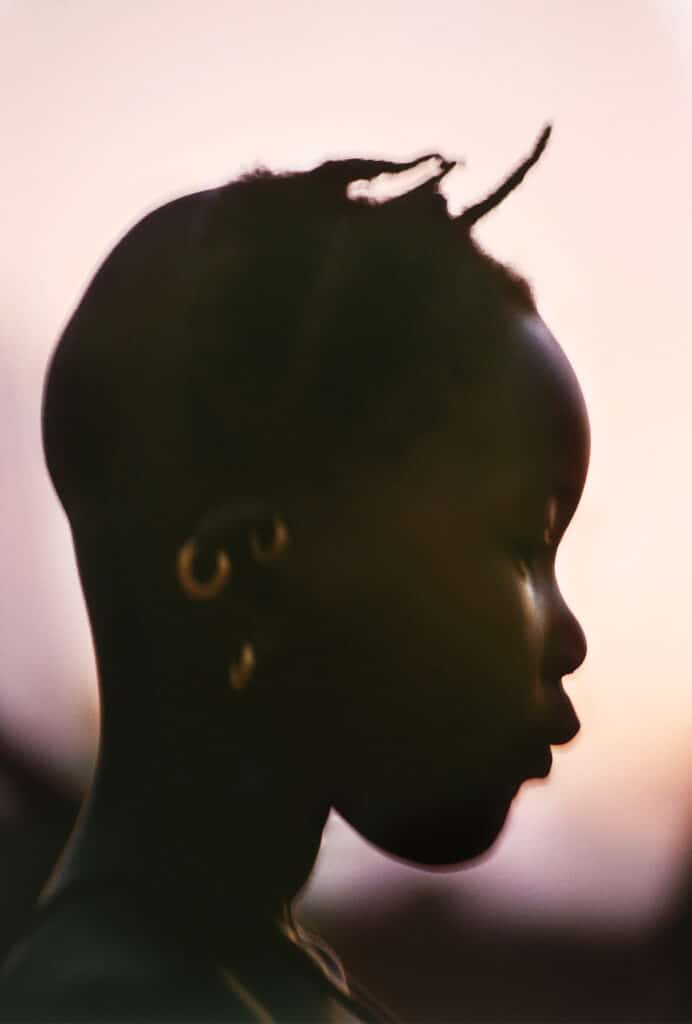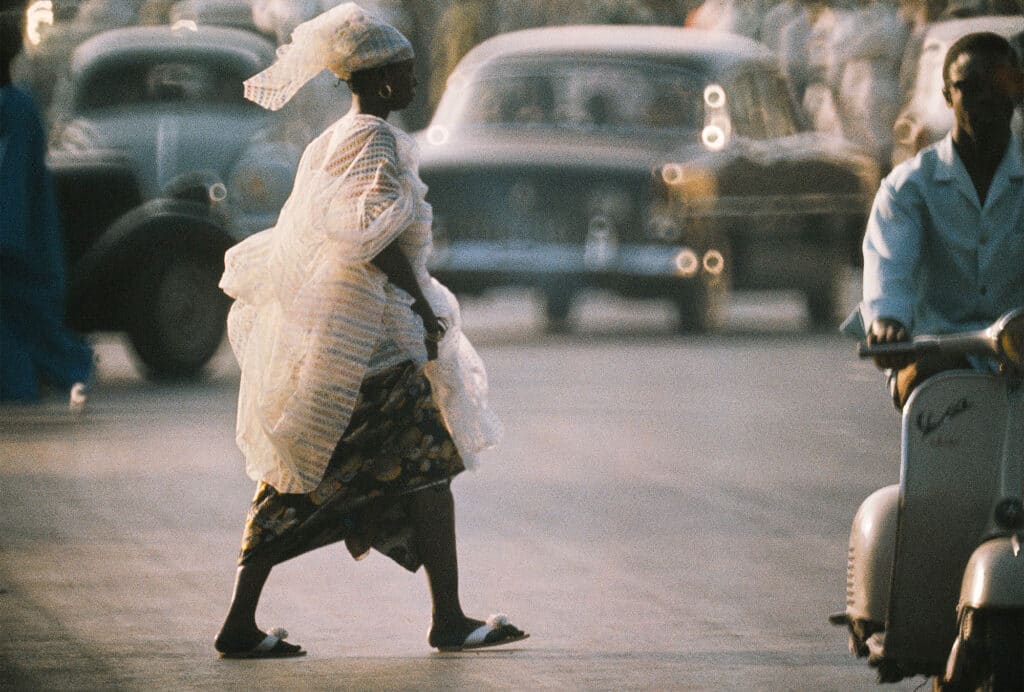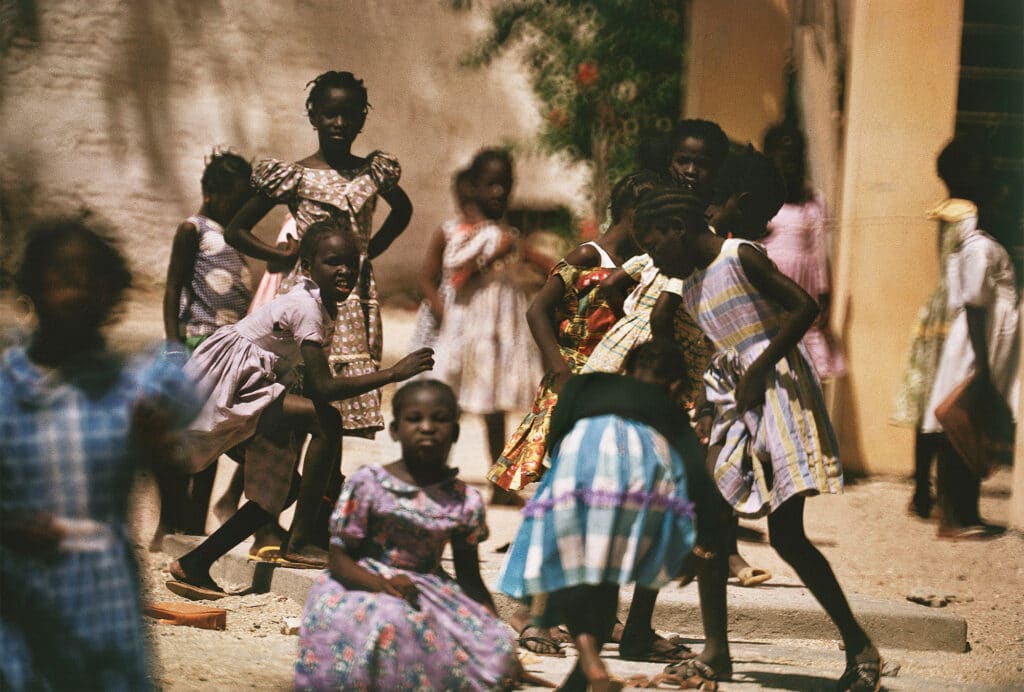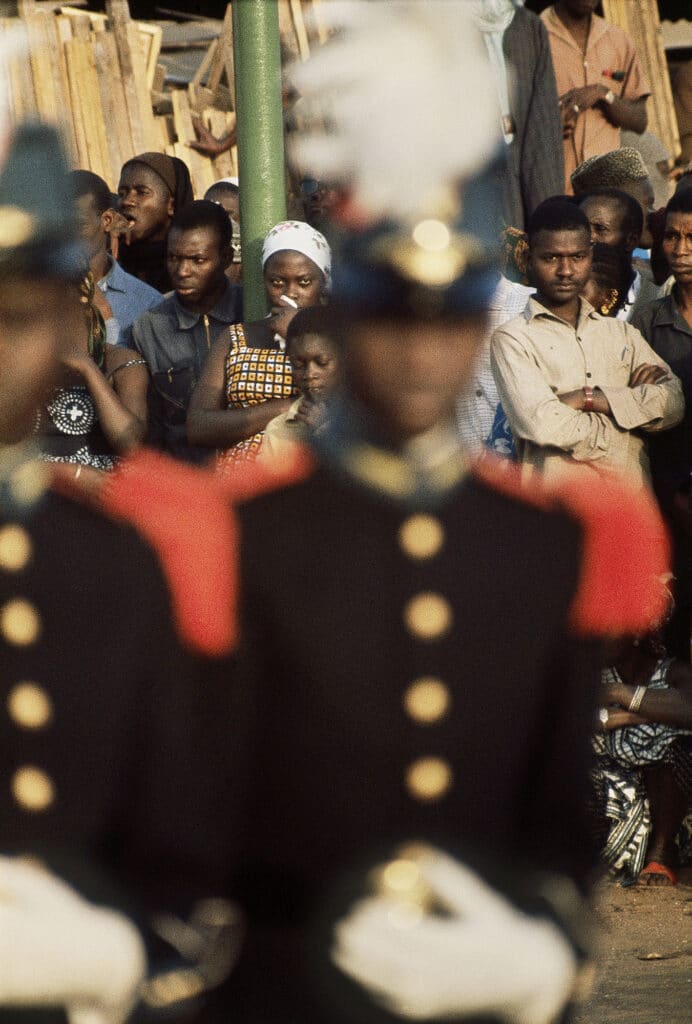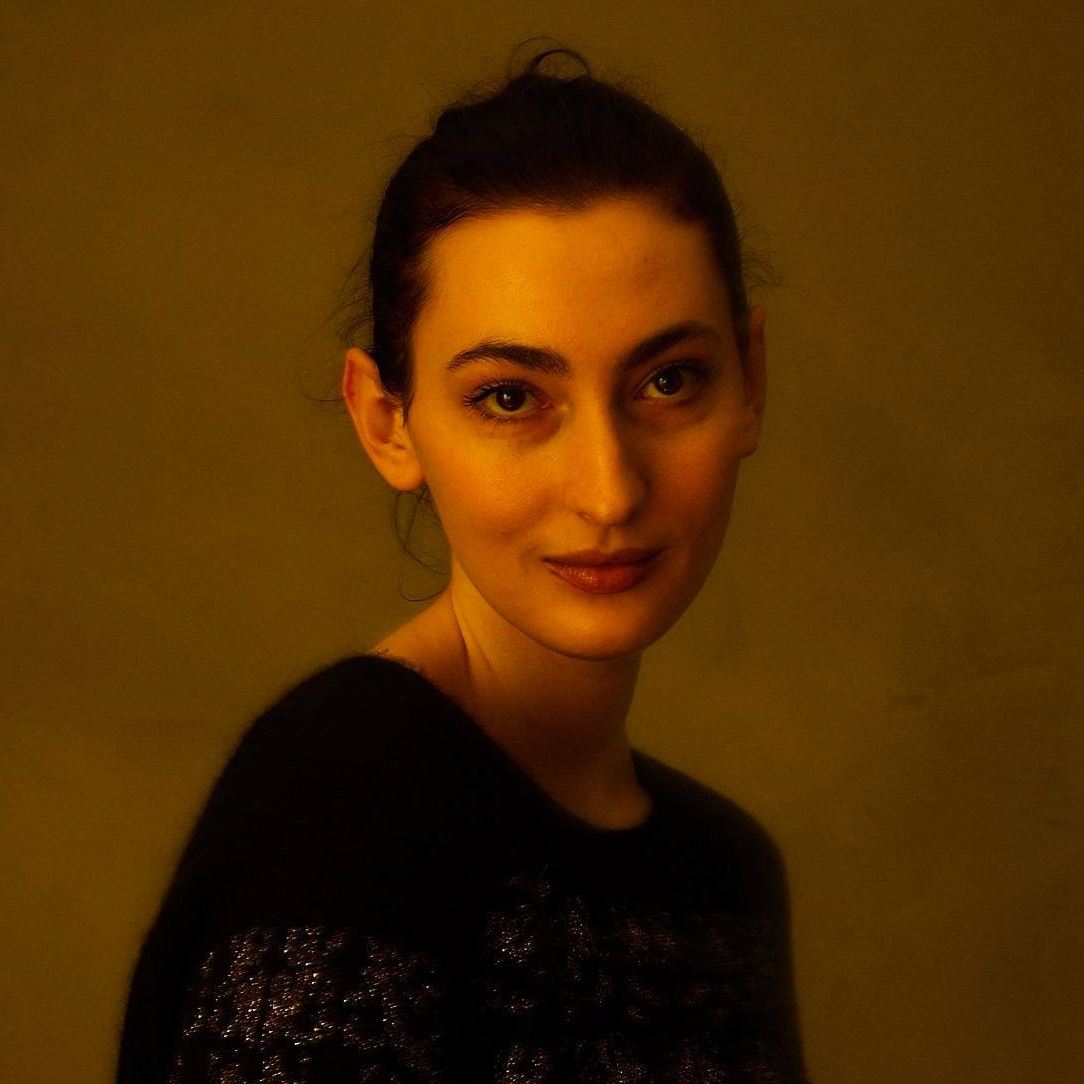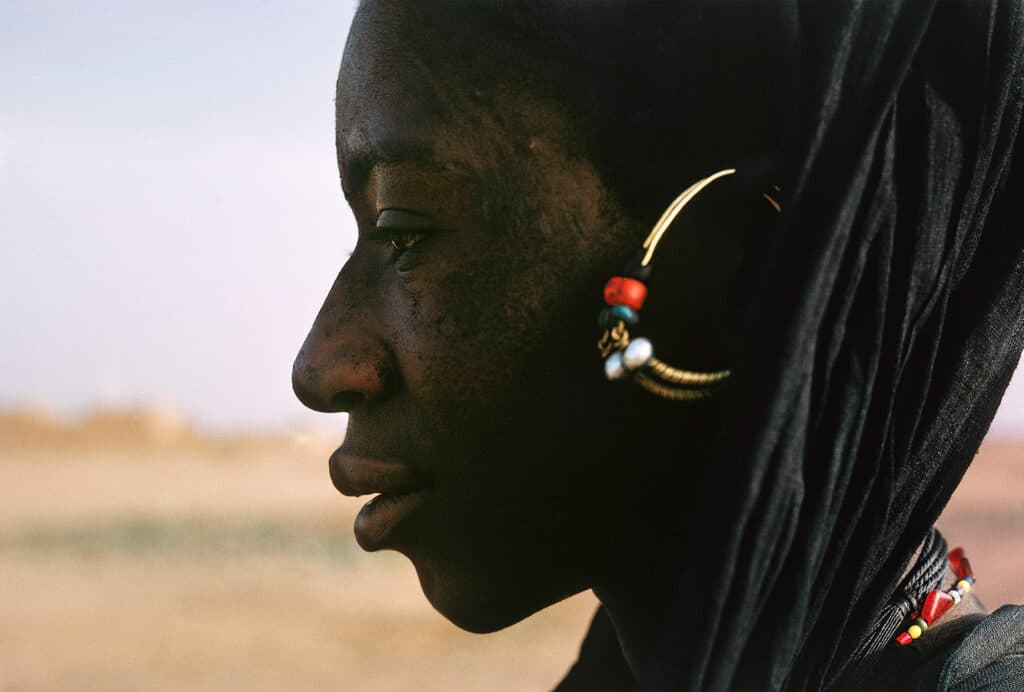
In 1963, the photographer William Klein packed his bags and got on a plane bound for Western Africa. Across Niger and Senegal, Klein focused his lens on brightly hued fashions and landscapes under honey-colored light while on assignments for the British men’s magazine Town and the Weekly Telegraph. Several of the images he took were published at the time, but most of what he shot across Africa remained as negatives and slides, packed away and hidden in storage at his Paris studio.
The gallerist Howard Greenberg remembered seeing some prints of Dakar, and asked Klein’s assistant to explore. Soon, Greenberg was looking through black-and-white and color photographs that had never been seen before: now, the images are on view for the first time in a new show called “William Klein: Afrique” at Greenberg’s gallery in New York.
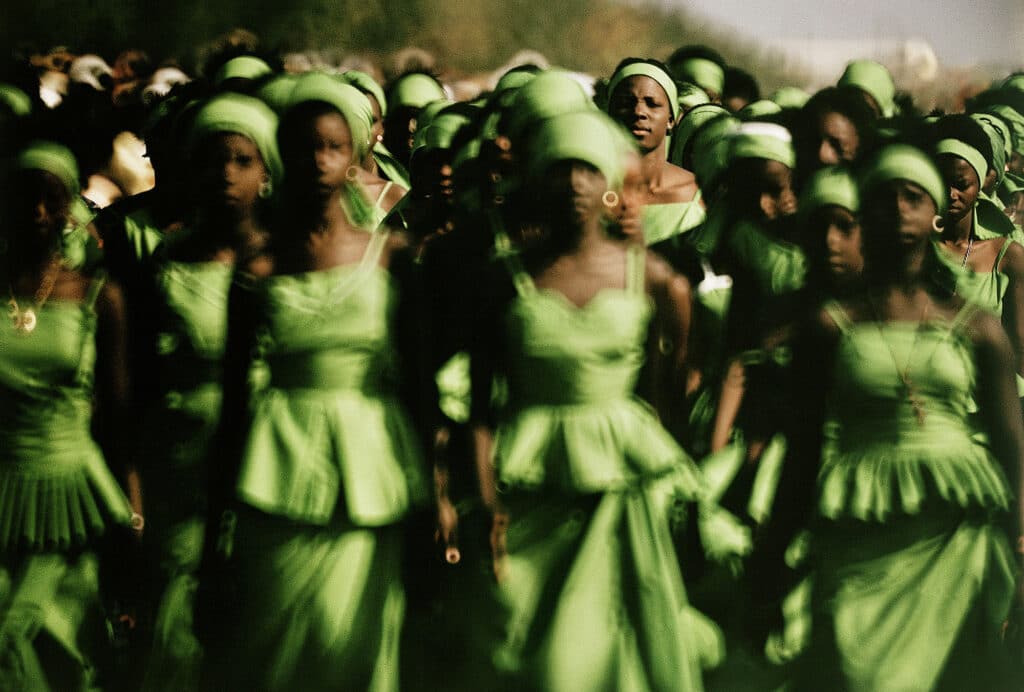
Though Klein is primarily remembered today for his crisp black-and-white fashion photographs, the exhibit presents a new facet to his work in these images of Africa. His eye as a fashion photographer is still present, but here, he plays with a blurred focus, opting to highlight the backgrounds and leaving the foregrounds undefined.
One of the most striking images is Independence parade, Dakar, Senegal, 1963, showing a group of women all clothed in lime-green dresses and headwraps. The row of women in the foreground are hazy and indistinct: there is only one woman, a few rows back, whose face is perfectly in focus. The overall effect is a painterly one (an unsurprising feat, given that Klein originally trained as a painter, studying with Fernand Léger) with the layers of soft green fabric appearing like brushstrokes. Among the wash of green and brown tones, there are metallic bursts as the gold hoops adorning the women’s ears catch the light of the sun.
Another shot from the parade plays with the same dynamic. Men in military regalia, with their white gloves and feather plumes, are transformed into suggestions of color, while the crowd watching in the back is in sharp detail.
But Klein didn’t just photograph parades; he captured moments of everyday life, too. In one such image, a woman crosses the street as traffic whizzes behind her, with a diaphanous white dress layered over a darker dress underneath. Though she is mid-stride, she is a moment of calm in the midst of the frenetic energy buzzing around her.
As the International Center for Photography hosts a retrospective of Klein’s work in “William Klein: YES”, Greenberg’s exhibit is an excellent complement. By shining a light on a previously unseen series, we see an important aspect of his work that would go on to inform the documentary films he shot over the subsequent 15 years. “William Klein: Afrique” captures a pivotal moment in Klein’s life and career, all in brilliant color.
Exhibition “William Klein: Afrique”, Howard Greenberg Gallery, New York, until September 17, 2022.
